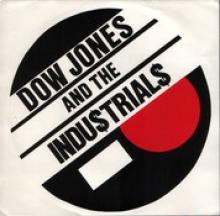Having previously commented on Dow Jones and the Industrials, some might find it obtuse to revisit the subject. Examining just the tracks that the band contributed to the Hoosier Hysteria! disc seems reductive, even if it represents the majority of what the band recorded.
Coming out of an Indiana scene that was surprisingly varied when compared to other cities across the States, the Industrials were really benefitted by not being a part of a larger town’s clutch of bands. If the group were based either in New York or Chicago, there’s little doubt that the ensemble would have felt the pressures of surrounding ensembles. It wouldn’t have necessarily yielded a deadened sound, but the place from which a music comes is as important as anything else.
So while the handful of tracks contributed to that Hoosier styled compilation lending listeners a good idea of what the band worked out, line up shifts and the like would augment the aural approach the band had by the time of its dissolution in 1981.
There wasn’t ever a concerted tone to the Industrials’ work. Listening to compilation appearances the band moves from straight punk to oddly flavored new wavish experiments. There wasn’t anything pop oriented about the work here – the melodies, if slowed down and smoothed out could have worked for a number of group’s, though. Just the breadth of approach is admirable.
So, the relatively traditional punk work from the its earliest release would be mirrored in stuff like “Can’t Stand the Midwest,” a sort of anthem for those that felt displaced and odd in any situation. There was still skewed stuff to come.
Included alongside that best known track, on the band’s self titled single, is work like “Let’s Go Steady.” The rhythms are detached from most understandings of what punk was and winds up being more closely tied to latter day post-punk stuff from the UK. It’s lineage notwithstanding, the song includes a lengthy passage that might be better for dancing subsequent to eating some uppers. The less melodic fair, seated alongside it’s revved up pop songs just makes the Industrials a difficult band to understand.
Its interest in technology, found in not just lyrical content from songs like “Ladies With Appliances,” but in the band’s pioneering use of keyboards disallows for any sort of pigeonholing. But after all, punk was about the cultural other at its onset. So, groups refusing to identify itself as one thing or another might be troublesome to latter day music foragers. The adventurous nature of it all, though, is what the genre – or good music – is really about. Start digging, your parents might have one of these discs sitting around in your basement. Who knows?
